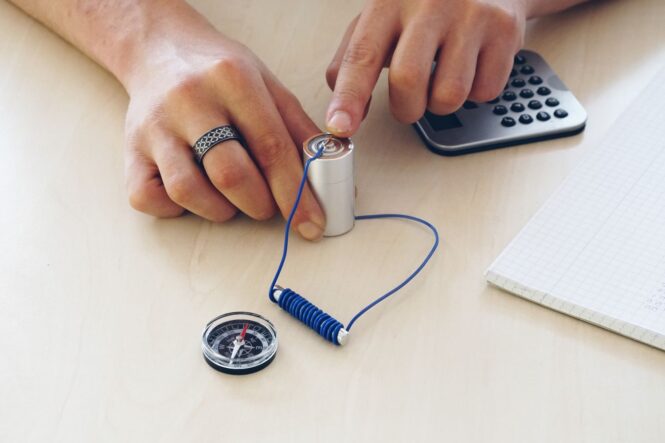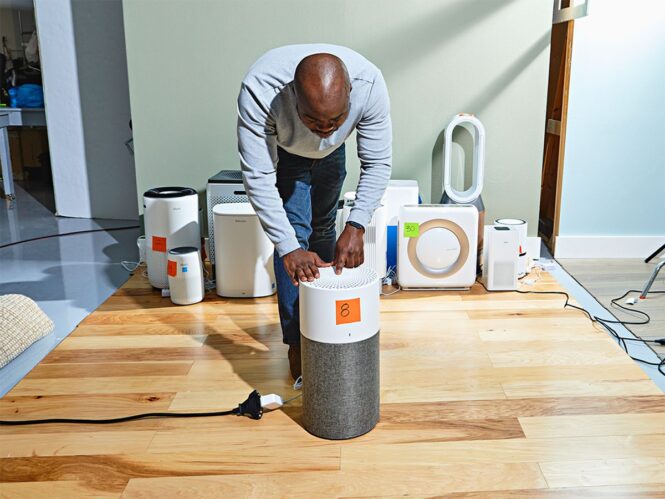The scope of magnetic field and electric field applications is vast, and we utilize them in many different ways. Electric fields are used in the generation of electricity which powers our homes, offices, and industries. On the other hand, magnetic fields are used in the production of tools and devices that improve our communication and make our life more comfortable than before. Moreover, these fields also have applications in the field of science and medicine. Electromagnetic waves and fields, for example, are used in medical imaging and therapy, making it easier to detect abnormalities and the treatment of various diseases.
In this blog post, we will take a look at some common applications of magnetic field and electric field in everyday life. The goal is to gain some insight into how these concepts have been applied to create the world around us.
1. Electric fields are used in everyday electronic devices

Electric fields are present in many electronic devices that are a part of our daily lives. Smartphones, computers, televisions, and other electronic devices use electric fields for various purposes. The electric fields in these devices help in generating and transmitting signals, processing information, and providing power to the circuits. In smartphones and computers, electric fields are used to create displays and transfer data through wires and wireless signals. Similarly, televisions use electric fields to produce images on the screen and transmit signals from the antenna or cable source.
2. Magnetic fields are used in MRI machines for medical purposes
Magnetic fields are used extensively for medical purposes, particularly in Magnetic Resonance Imaging (MRI) machines. The powerful magnets in MRI machines use magnetic fields to create images of the inside of the body. These images are useful for diagnosing various medical conditions, such as tumors, internal bleeding, and neurological disorders. The magnets used in MRI machines are much stronger than the magnets in everyday settings and create a uniform magnetic field that is ten thousand times stronger than the earth’s magnetic field. The magnetic field generated by the MRI machine causes the atoms in the body to align in a specific direction, and radio waves are then used to create images of the body’s internal structures.
3. Electric fields are used in electric motors and generators that power appliances and machinery
Electric motors and generators play a crucial role in powering a wide range of appliances and machinery used in everyday life. The basic principle behind these devices is the interaction between electric and magnetic fields. Electric fields are used in electric motors to produce a rotational motion by creating a torque that can be used to perform mechanical work. Similarly, in generators, a magnetic field is used to convert rotational energy to electrical energy. This energy conversion process is widely used in power plants to generate electricity for homes and businesses.
4. Magnetic fields are used in credit cards and security tags to prevent theft

Magnetic fields are an important aspect of modern security systems used to prevent theft. Credit cards and security tags commonly use magnetic fields to protect against unwanted activities. Credit cards contain a magnetic stripe that contains personal information, including the account number and balance. When the card is swiped at a terminal, the magnetic stripe is read and the information is transmitted to the system. Security tags also use magnetic fields to prevent theft. These tags, which are commonly found on clothing, use magnetic strips that are triggered to emit an alarm when they are removed from the store. The magnetic fields generated by these systems ensure that only authorized access is granted, offering an effective and reliable solution against theft.
5. Electric fields are used in tasers and stun guns for self-defense
Tasers and stun guns utilize high-voltage, low-current electric shocks to momentarily incapacitate an attacker or subject, providing a crucial opportunity for escape or restraint. Tasers typically shoot electrically charged wires that stick to the target and deliver the shock, while stun guns require direct contact with the target’s skin to deliver the electric shock. The shocks from these devices disrupt the attacker’s neuromuscular system, causing temporary paralysis and disorientation without causing permanent harm.
6. Magnetic fields are used in speakers and headphones to produce sound
Magnetic fields are used in speakers and headphones to produce sound. This is because sound waves are created by vibrations, which are caused by electrical signals that travel through wires. When these electrical signals are applied to a coil of wire, they create a magnetic field around the wire. This magnetic field then interacts with a magnet, causing the coil to vibrate and produce sound waves. The size and shape of the coil, its distance from the magnet, and the strength of the magnetic field all affect the quality and volume of the sound produced. Thanks to the use of magnetic fields in speakers and headphones, we are able to enjoy a wide range of audio experiences, from the booming bass of a concert to the subtle whispers of a podcast.
7. Electric fields are used in air purifiers to remove airborne particles

Electric fields are extensively utilized in air purifiers to eliminate airborne particles. The concept behind this usage is that airborne particles carry an electric charge, which makes them susceptible to being manipulated by an electric field. The air purifier works by creating an electric field across a collectible surface, which charges the airborne particles in the surrounding air. When these charged particles come into contact with the surface of the purifier, they adhere to it, removing them from the air. These purifiers are particularly effective in removing small particles such as pet dander, mold spores, and pollen that can impact respiratory health.
8. Magnetic fields are used in compasses for navigation
A compass is a device that enables us to determine direction by aligning with the Earth’s magnetic field. The needle within the compass is magnetic and is suspended using a pivot, allowing it to move and align itself with the Earth’s magnetic field. One end of the needle points north, and this helps us navigate and orient ourselves when we are traveling. Magnetic fields play an essential role in the functioning of compasses, and they have been used for centuries to aid seafarers, hikers, and adventurers in navigating unknown territories.
In conclusion, electric and magnetic fields are ubiquitous in our modern lives, and play a crucial role in applications ranging from medical technologies to transportation systems. They are integral to many tools and devices that we use daily, such as MRI machines, cell phones, and electric cars. Understanding these fields and their applications can help us appreciate the incredible technological feats that make our lives easier, healthier, and more efficient. As these fields continue to evolve and advance, it will be exciting to see the new and innovative ways they will be applied to improve our everyday experiences.
 Imagup General Magazine 2024
Imagup General Magazine 2024



